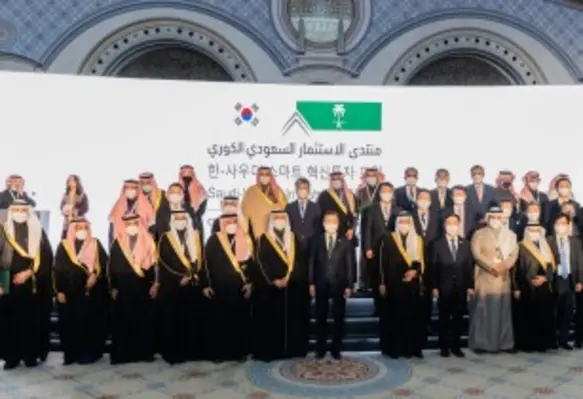Saudi Aramco has signed one agreement and nine MoUs with Korean entities, which aim to advance its downstream strategy and support development of low-carbon energy solutions, while creating new financing options for Aramco
The signings took place at the Saudi-Korean Investment Forum in Riyadh, an event hosted by Saudi Arabia’s Ministry of Investment which was also attended by the president of the Republic of Korea, HE Moon Jae-in, Aramco president and CEO Amin H Nasser, and senior corporate executives from both countries.
Aramco signed an agreement with Korea’s Doosan Heavy Industries and Construction Company and the Saudi Arabian Industrial Investments Company, Dussur. This partnership aims to establish a casting and forging facility that could supply the Kingdom’s manufacturers with industrial and process equipment such as valves, pumps, compressors, wellheads, flanges, heat exchangers and gas and wind turbines, with the objective to enhance local content. The planned joint venture has a production target of 60,000 tonnes per year, primarily from sand-casting and open-die forging processes, complemented by machining capabilities.
Low-carbon energy solutions
The agreements also include MoUs with Korean energy companies KEPCO, S-Oil, POSCO, Hyundai Oilbank, H2Korea and Lotte Chemical to explore potential collaboration in the supply, transportation, utilisation and certification of hydrogen and ammonia.
The companies also plan to study the feasibility of converting exported ammonia into hydrogen – a process known as ammonia back-cracking. This represents a first step towards a potential large-scale production facility for hydrogen and ammonia in Saudi Arabia, which would also include a Carbon Capture and Storage (CCS) facility.
Amin H Nasser, Aramco president and CEO, said, “In addition to focusing on cutting-edge development in a range of areas, they also support our shared goal of finding climate solutions and lowering greenhouse gas emissions through the development of low-carbon hydrogen and ammonia production, as well as carbon capture and storage.”









